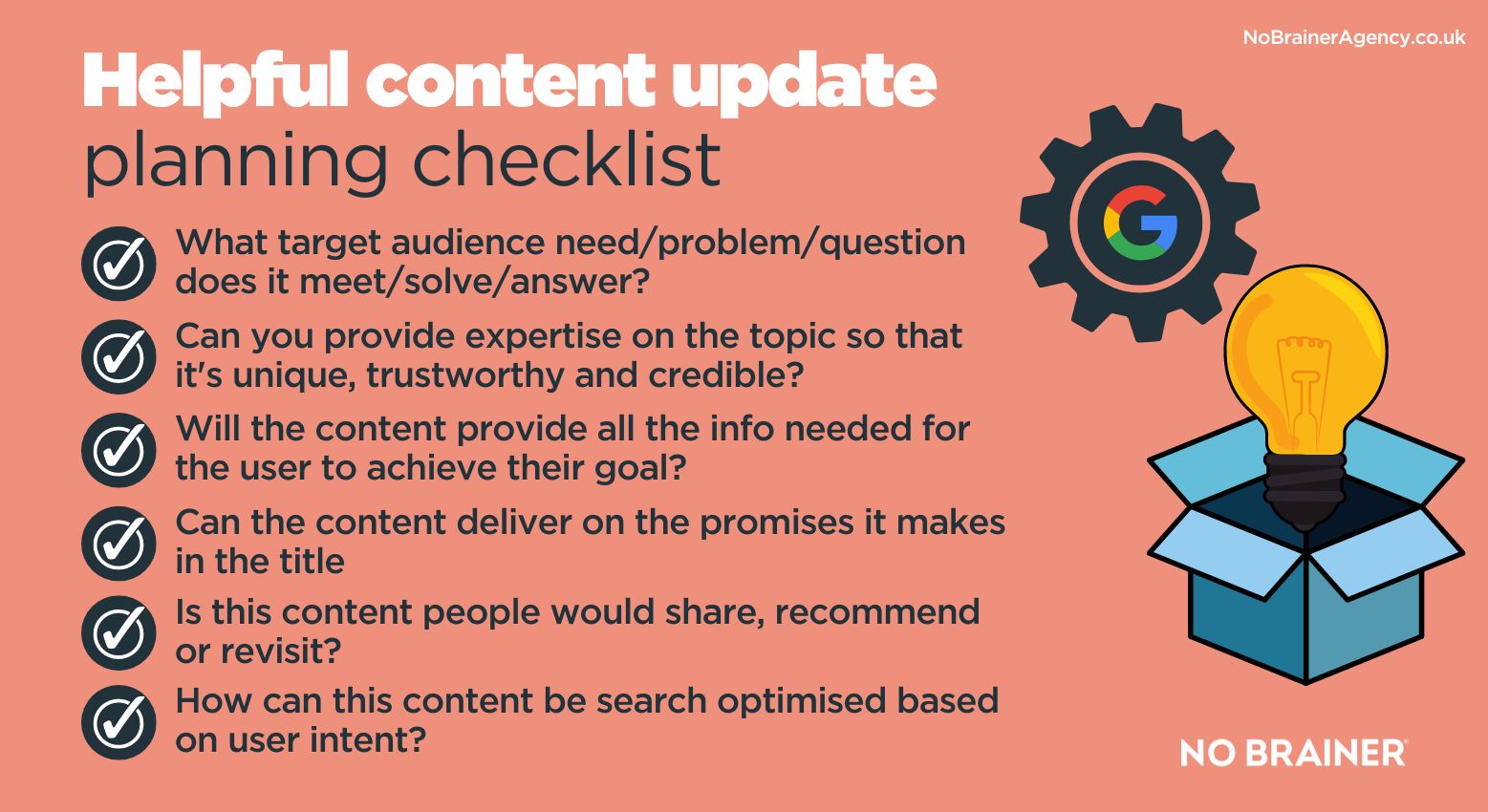There are many challenges and hurdles when it comes to content marketing in the UK financial services sector. As well as strict industry regulation which heavily influences what can and can’t be said by financial brands, there are lots of other considerations to incorporate into an effective marketing strategy and approach.
We look at some of the key areas that can help achieve the best possible results and return on financial services marketing activity.
Understanding audience needs and challenges
As with any marketing activity, having a clear understanding of these things is fundamental before you start work:
- Who the content is for
- What the audience’s need or challenge your content is trying to help with or resolve
- The outcome(s) that you want the content to achieve with your audience
Knowing your customers and their user journey when it comes to looking for financial products and services like yours is the foundation that everything in your marketing strategy should be built upon, so getting this right is key.
A really useful exercise is to map out every stage of their journey in terms of what your audience might search for information on (keyword research), what questions they might want answering and what barriers there might be to making a buying decision.
You may have several different important customer segments who all have slightly different journeys and informational needs, but spending time on getting this as accurate as possible now will absolutely pay off later, with much more targeted and intentional content activity being planned and implemented.
Using Google’s YMYL and E-E-A-T principles for content planning
Google certainly loves an acronym!
YMYL is ‘your money, your life’ and refers to topics that could have an impact on readers’ financial stability, health and wellbeing, which Google can treat differently when it comes to the way they rank web pages in their results.
Their full Quality Rater Guidelines outlines whether content falls under YMYL or not, but also says that if someone would seek experts on this topic to prevent harm, and inaccurate information could potentially cause harm, it’s likely to be considered YMYL. Financial services content can certainly fall into this camp.
E-E-A-T stands for Experience, Expertise, Authoritativeness and Trustworthiness, which should be the pillars of all online content for a financial services brand (and across all sectors). While ensuring your content follows E-E-A-T principles isn’t a ranking factor in itself, it helps Google to determine whether a page is high-quality and therefore worthy of ranking well for relevant searches.
Bearing these two sets of principles in mind, along with other SEO best practice, when planning and creating content can help ensure that the foundations are right in order to achieve the best possible organic rankings, along with making sure that other SEO fundamentals are followed.
Building trust through credible, expert-led content
While of course the way that content appears to search engines is important, it’s even more important that it sends the right information and communicates appropriate messages to potential customers.
By positioning your brand content as expert and ensuring it comes across as credible, you’ll build trust with your audience and they’ll be more likely to convert as a result.
There are many ways to do this, but some of the most critical are by giving specific pieces of content authorship details. The author of a piece of content should have the necessary experience and/or qualifications, as well as deep knowledge on the topic, to be seen as an expert in that subject.
As well as the previously mentioned Google guidelines to help measure content quality, another guest at the content party is their 2022 Helpful Content Update. This was an algorithmic update that provides some criteria by which the search engine deems content to be worth ranking well.
Ensuring that the individuals writing your content adhere to these guidelines can be a challenge, but it’s always worth briefing in these factors in to subject matter experts and checking the content they produce against them before publishing.
Demonstrating thought leadership
Going hand in hand with subject expertise is thought leadership content.
In the financial services sector, becoming a go-to for the media on certain subjects can be an invaluable boon for marketing success and brand awareness. Providing expert comments on relevant current events, or even TV and radio interviews on some financial matters, isn’t out of reach for any financial services brand.
A good starting point for this is to build thought leadership content on the brand website first, whilst also making the most of any opportunities for guest posting on reputable trade industry websites and relevant interviews or podcast appearances. A good agency that provides an expert media relations service can help to facilitate this and build a thought leadership brand alongside the company brand.
Get trust signals front and centre on content and branding
We’ve already mentioned how important trust is with the financial services sector. Potential customers need to trust that you’ll deliver what you say you will in order for them to convert, and many trust signals are not things they might consciously notice.
Simple steps such as the below can make a big difference to how your content is perceived and trusted:
- Adding customer testimonials to online content
- Adding independent review star ratings to key places in content e.g. Trustpilot star ratings in images or prominently on landing pages
- Adding branding to all your visual content so it’s clear that you created it
- Adding any recognisable industry affiliation badges to online content e.g. showing that you are FCA authorised
Appearing professional doesn’t mean you can’t have and communicate brand personality
Due to the regulatory requirements for the sector, financial services brands are often very conservative when it comes to their brand voice and the tone used in their content. While communicating in a professional manner is important to help build trust, applying this to all content and marketing tone can mean it’s hard for any personality to come through at all, which can limit your ability to stand out and be memorable to potential customers.
Finding the right balance so that you have a clearly identifiable brand personality, but still maintaining the essential factors that indicate you can be trusted, can be a challenge, but it’s not impossible.
A great, and rather extreme, example of this is the life insurance brand, Dead Happy. Taking a subject and financial product that most people don’t really want to think or talk about and building a brand around looking at it in a different way is bold, but has really worked for them.
You don’t necessarily need to take things that far, but it’s proof that being FCA regulated doesn’t mean that having a brand personality isn’t an option.
Having clear comprehensive guidelines for content that complies with regulations
‘Compliance’ is a word that strikes fear into the hearts of content creators and marketers in the financial services industry, but many of the redrafts and amendments that end up having to be done can be avoided if the groundwork is done first with a robust set of guidelines that all content needs to stick to.
More than just some brand guidelines, a full comprehensive guide can incorporate a wide range of different examples, along with dos and don’ts, to make it clear what is compliant and what isn’t for content creation purposes. In such a heavily regulated industry, getting things right first time can save a significant amount of time and resource.
Being sensitive to the current economic situation
The UK is currently going through some very challenging times that are expected to continue for the foreseeable future, with most of the population feeling the squeeze to some degree or another.
Regardless of whether your target audience is likely to be significantly affected by this, it’s important for brands to ‘read the room’ and take into account that financial topics can be a sensitive subject at the moment.
Some of the measures to take could include:
- Being empathetic (but not patronising) in marketing messaging and advertising
- Being transparent with customers if your own pricing model needs to change
See more marketing advice for brands during the cost-of-living crisis.
While content marketing in the financial services sector can have challenges, with some planning and a strong strategy in place, it can be a highly effective way to drive more relevant traffic and conversions, working in combination with other channels such as SEO, digital PR and social media.
If you’re a financial services brand and want to know how we can help your business grow, we’d love to hear from you. Please get in touch using the form below.










